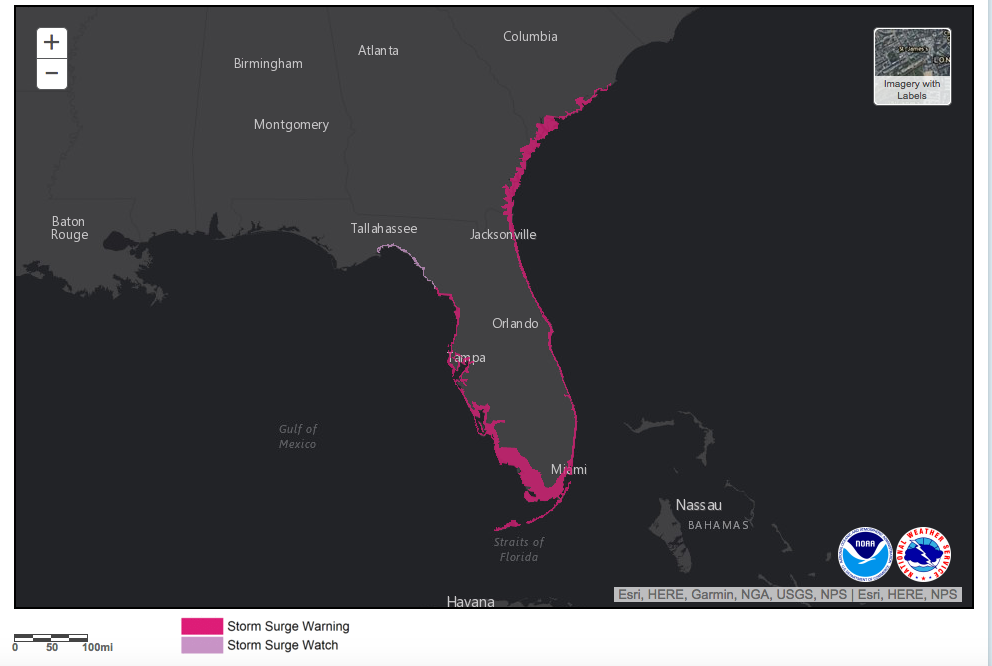Building Coastal Resilience
By Alyssa Koehn
Date
September 15, 2017With the recent flooding from Hurricane Harvey in Texas and Hurricane Irma in Florida, the discussion around building coastal resilience is not only increasingly topical, but becoming necessary to protect human lives. Increased storm surges and consistent sea level rise is no longer a future fear but a present day problem. What is coastal resilience and how are cities like Miami, New York, and San Francisco building it? And will it be enough to continue inhabiting these coastal communities in an increasingly uncertain future?
What is Coastal Resilience?
The National Oceanic and Atmosphere Administration officially defines coastal resilience as “the ability to adapt to changing conditions and withstand—and rapidly recover from—disruption due to emergencies. … Here at the National Ocean Service, we are focused on coastal and ocean resilience because we recognize that communities that live near our coasts are increasingly vulnerable to disasters while also facing many other powerful long-term environmental changes.”
Hurricanes can’t be controlled and while climate change mitigation can help prevent catastrophic sea level rises, this is clearly beyond the scope of any single municipality. Building coastal resilience, then, is about creating plans and building infrastructure that mitigates damage, allows for a quick response to disasters, and ensures the tools are available for a rapid recovery. The water will come- how can we prepare for it?
Many cities have begun to integrate this work into their municipal or regional planning work. For example, the San Francisco Planning and Public Works divisions jointly created a “Sea Level Rise Action Plan” for the city. In Vancouver, a component of the “Climate Change Adaptation Strategy” focuses directly on sea level rise. These plans tend to work on two fronts- addressing overall sea level rise, which will bring standard tides as high as current day King tides, and planning for disastrous weather events with additional massive storm surges.
Can We Save Miami?
Again, coastal resilience is no longer a future problem; catastrophic scenarios are already appearing in present day models. At one point, shortly before Hurricane Irma made landfall in Florida, Hurricane Irma’s surge forecast showed 7-10 feet of water above ground in many areas, according to the National Weather Service. Thankfully the forecast for the storm changed, as the storm shifted further West than originally anticipated, and catastrophic storm surges were somewhat minimized. A map of the Florida coast line shows the dramatic area at risk of these high storm surges. With climate change, these storm surges will become more frequent, and eventually sea level rise will make some of these surges a permanent condition, forming a new coast and submerging much of the city of Miami.

Click here for larger image. Image Credit: National Oceanic and Atmospheric Administration
Flooding is becoming a regular part of life in Southern Florida, even in communities far inland, as ocean water rises through the porous limestone that makes up this end of the Florida peninsula. “Sunny day flooding”, flooding that occurs from sea level rise rather than weather, is now a typical phenomenon when high tides force seawater through the ocean outfalls and back up through the drains. In places like Miami beach, models show that most of the area is likely to be underwater by 2100 as “sunny day flooding” becomes a permanent condition.
Innovation v. The Planet
The highest risk major metropolis’ in North America are not letting their cities submerge without a valiant fight. Coastal resilience committees and working groups have been formed in the city governments across North America, and private capital is beginning to enter into the discussion. In San Francisco, the Rockefeller Foundation has sponsored a design competition for 10 teams to build and test innovation sea level rise solutions. Modelled after a similar post-Sandy competition, the goal of this new iteration of the competition is to build solutions prior to disaster, saving money and livelihoods by designing for solutions ahead of time. In New York, architects and engineers have started planning for flood waters in their building design, using materials on the ground floor that can be easily cleaned after a flood and including backup generators at the top of towers. As noted earlier, many cities are learning from Dutch strategies, and cities such as Rotterdam are ambitiously aiming to “climate proof” the city by 2025. More out-there ideas also exist, such as the construction of floating islands for new cities. Can innovation outsmart climate change? It seems increasingly unlikely that we will be able to stop the rising tides, but by learning from each other’s innovation, cities may be able to adapt to new conditions.
Photo by Lance Asper on Unsplash
Alyssa Koehn is an urban designer with IBI Group’s Vancouver practice. Her work focuses primarily on the development of master planning concepts, where she manages both the design and approval process, as well as facilitating public engagement and outreach. She has worked on both public and private sector projects, ranging from a few acres to a city-wide scale. Alyssa holds both a Master of Architecture and a Master of Urban Planning from the University of California, Los Angeles. She works to integrate the two disciplines, ensuring that master planning concepts both align with local policy goals and transition smoothly into architecture. Alyssa is a strong communicator and project manager, often leading large and complex project teams. Her strengths are her attention to detail, efficient administration, and interdisciplinary approach to site design, as well as the integration of design-thinking into the public engagement process to ensure successful outcomes for both participants and clients.









